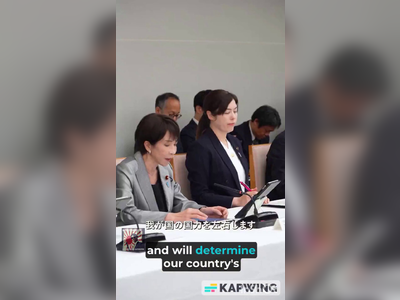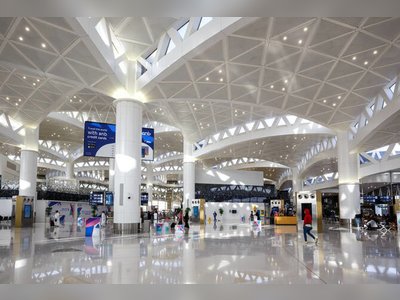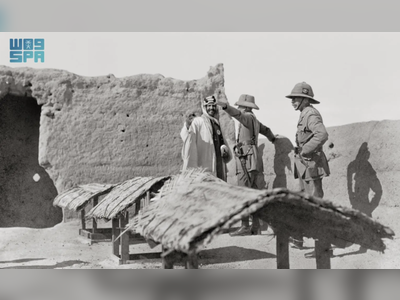
How Much Oil Can Saudi Arabia Really Produce? | OilPrice.com
Saudi Arabia has claimed it looks to increase its total oil production capacity to 13 million bpd, but the kingdom might not be able to achieve these numbers at all
For decades, the true numbers relating to Saudi Arabia’s level of crude oil reserves and production have been a subject of much debate and confusion, not helped by the obfuscation from the Saudis over precisely what these numbers are. The reason for obfuscation is that Saudi Arabia’s only source of real power in the world begins and ends with its oil reserves and production, so the higher these numbers, the more the power, and the lower the number the less the power.
In recent weeks this debate has become even more pronounced in the run-up to Saudi Arabia’s latest bond offering and in the debate oversupply and demand in the oil market over the remainder of this year and beyond. As detailed below, much of what Saudi Arabia has said about its oil reserves, current production, and likely future production is an exaggeration made for the purposes of self-aggrandizement but despite that, the numbers have increased somewhat compared to where they were 10 years ago.
To begin with the claimed crude oil reserves numbers: these have been a work of stunning bravado and almost complete fiction since 1990 when the Kingdom suddenly increased the official number from 170 billion barrels to 257 billion barrels, despite absolutely no new oil discoveries or improvements in recovery rates being made, as highlighted in my last book on the oil markets.
Shortly thereafter, Saudi Arabia increased its official crude oil reserves numbers again, to 266.4 billion barrels, a level that persisted until a slight increase in 2017, to 268.5 billion barrels. Over the same period – in fact, from 1973 to last month - Saudi Arabia has pumped an average of 8.162 million barrels per day (bpd). Taking just the 30-year period from 1990 to 2020, this means that Saudi Arabia permanently removed 2,979,130,000 (around 2.98 billion) barrels of oil every year from its fields, a total over that 30-year period of: 89,373,900,000 (about 89.4 billion) barrels.
Using the original number of crude oil reserves would have meant that Saudi Arabia’s reserves would now stand at around 81 billion barrels, placing it around eighth on the list of countries by crude oil reserves ranking. Instead, due to the exceptionally fortunate – and equally mystifying - unilateral hike in the reserves numbers by Saudi itself in 1990 (the numbers were not originated or corroborated by any independent source, mark you), Saudi Arabia has somehow been able simultaneously to remove 89.4 billion barrels of oil permanently from its fields whilst actually increasing its crude oil reserves numbers by over 87 billion barrels. Given, as mentioned, that during this time there were no new oil discoveries made – indeed, there was declining production over this period at many of Saudi Arabia’s core fields, including Ghawar - this is a mathematical impossibility.
So to the actual oil crude oil production numbers: as highlighted above, the average amount of crude oil that Saudi Arabia was able to pump from 1973 to last month was 8.162 million bpd.
That is it, there is no equivocation on that number, and no account is taken within that number of the unverifiable claims of any other ‘oil equivalents’ that Saudi likes to throw into any questioning of that number in order to further obfuscate the issue. If this – correct – number is used as the basis for discussion then all of Saudi Arabia’s subsequent activities make perfect sense.
Most tellingly in this regard, the question often asked around the time of the first Saudi-instigated oil price war from 2014-2016 that was aimed at destroying the then-nascent U.S. shale oil threat to Saudi was: ‘Why didn’t the Saudis pump more oil to crash prices more?’ After all, the Saudi strategy was for it and all other OPEC members to pump as much crude oil as possible to push oil prices as low as possible to cause as many bankruptcies as possible in the U.S. shale oil sector.
The fact of the matter is that the Saudis did pump everything it could at that point. It pumped its usual 8.1 and a bit million bpd, plus it pumped to the maximum on all of its other fields, plus it used its oil in storage but despite all of that it was not able to produce more than around 10 million barrels per day of oil at any point for more than a few months or so (basically until its storage ran out and it had to rely on genuine production from the wellheads).
Given that what was at stake in the 2014-2016 oil price war was the long-term future of Saudi Arabia as a significant power in the Middle East and the world, if it could have pumped one drop of oil more over that period then it would have.
This leads to Saudi’s nonsensical claims about its spare capacity. These claims have been based on the foundation that its base crude oil production is around 10 million bpd rather than the 8.162 million bpd that is factually correct.
It did indeed, as mentioned, produce just about 10 million bpd during its existentially important oil price war of 2014-2016 but that was going at absolutely full tilt and included storage volumes. The point here is that spare capacity is precisely that: basically, the extra amount that a country can produce in an emergency if and when required over and above the amount that can be produced with ease every day.
The Energy Information Administration defines spare capacity specifically as production that can be brought online within 30 days and sustained for at least 90 days, whilst even Saudi Arabia has said that it would need at least 90 days to move rigs to drill new wells and raise production to the mythical 12 million bpd or 12.5 million bpd level.
Abiding by this rule, Saudi Arabia’s genuine spare capacity up to at least the end of 2016 was at most about 2 million barrels per day using 8 million bpd as the base number, so equalling about 10 million bpd in total, which is precisely what it produced when it needed maximum production most (that is, during the 2014-2016 oil price war).
The Saudis instead have been using the correct spare capacity of 2 million bpd but adding it to the false baseline production number of 10 million bpd for years, giving a number that it keeps mentioning of total capacity of 12-13 million bpd.
Indeed, during its ill-fated 2020 oil price war the Saudi Ministry of Energy said it would increase its maximum sustained capacity to 13 million bpd. So fundamentally wrong is this Saudi number that it was forced to say so in the prospectus for its latest bond Saudi Aramco stated that it has not yet embarked on work to expand its maximum sustained capacity to this 13 million bpd level.
In terms of where we are now, there has been a slight change in Saudi Arabia’s favor. For a start, the restarting of the Partitioned Neutral Zone (PNZ) will bring 500,000-600,000 bpd back onto the market to be shared equally by Saudi and Kuwait, meaning up to 300,000 bpd extra for Saudi Arabia, which is not taking into account recent expansions.
“The average crude oil production from the start of 2012 - when the Saudis raised output to offset loss of Libya - to April 2020, we estimate at 10.0 million bpd, and for much of this period the PNZ was shut-in and for 2015 and 2016, the annual averages we have are 10.2 million bpd and 10.6 million bpd, which was a pretty sustained run,” Richard Bronze, an analyst at Energy Aspects, in London, exclusively told OilPrice.com last week.
“It’s tricky to validate official production capacity figures from any country unless we see it produce at that level for an extended period, at least three months, and Saudi Arabia briefly surged production last April , but I suspect this took it to a level that was not sustainable,” he said. “I estimate that Saudi Arabia can sustainably produce around 11.3 million bpd of crude, some way below the official figures of 12 million bpd or even 12.5 million bpd including the PNZ,” he added.
“Saudi Arabia has announced several upstream projects that are scheduled to come online around the middle of the decade, but these are largely required to offset the natural declines at existing fields and if the Kingdom is serious about wanting to raise production capacity then this will require significant additional capital investments over several years,” he concluded.
In recent weeks this debate has become even more pronounced in the run-up to Saudi Arabia’s latest bond offering and in the debate oversupply and demand in the oil market over the remainder of this year and beyond. As detailed below, much of what Saudi Arabia has said about its oil reserves, current production, and likely future production is an exaggeration made for the purposes of self-aggrandizement but despite that, the numbers have increased somewhat compared to where they were 10 years ago.
To begin with the claimed crude oil reserves numbers: these have been a work of stunning bravado and almost complete fiction since 1990 when the Kingdom suddenly increased the official number from 170 billion barrels to 257 billion barrels, despite absolutely no new oil discoveries or improvements in recovery rates being made, as highlighted in my last book on the oil markets.
Shortly thereafter, Saudi Arabia increased its official crude oil reserves numbers again, to 266.4 billion barrels, a level that persisted until a slight increase in 2017, to 268.5 billion barrels. Over the same period – in fact, from 1973 to last month - Saudi Arabia has pumped an average of 8.162 million barrels per day (bpd). Taking just the 30-year period from 1990 to 2020, this means that Saudi Arabia permanently removed 2,979,130,000 (around 2.98 billion) barrels of oil every year from its fields, a total over that 30-year period of: 89,373,900,000 (about 89.4 billion) barrels.
Using the original number of crude oil reserves would have meant that Saudi Arabia’s reserves would now stand at around 81 billion barrels, placing it around eighth on the list of countries by crude oil reserves ranking. Instead, due to the exceptionally fortunate – and equally mystifying - unilateral hike in the reserves numbers by Saudi itself in 1990 (the numbers were not originated or corroborated by any independent source, mark you), Saudi Arabia has somehow been able simultaneously to remove 89.4 billion barrels of oil permanently from its fields whilst actually increasing its crude oil reserves numbers by over 87 billion barrels. Given, as mentioned, that during this time there were no new oil discoveries made – indeed, there was declining production over this period at many of Saudi Arabia’s core fields, including Ghawar - this is a mathematical impossibility.
So to the actual oil crude oil production numbers: as highlighted above, the average amount of crude oil that Saudi Arabia was able to pump from 1973 to last month was 8.162 million bpd.
That is it, there is no equivocation on that number, and no account is taken within that number of the unverifiable claims of any other ‘oil equivalents’ that Saudi likes to throw into any questioning of that number in order to further obfuscate the issue. If this – correct – number is used as the basis for discussion then all of Saudi Arabia’s subsequent activities make perfect sense.
Most tellingly in this regard, the question often asked around the time of the first Saudi-instigated oil price war from 2014-2016 that was aimed at destroying the then-nascent U.S. shale oil threat to Saudi was: ‘Why didn’t the Saudis pump more oil to crash prices more?’ After all, the Saudi strategy was for it and all other OPEC members to pump as much crude oil as possible to push oil prices as low as possible to cause as many bankruptcies as possible in the U.S. shale oil sector.
The fact of the matter is that the Saudis did pump everything it could at that point. It pumped its usual 8.1 and a bit million bpd, plus it pumped to the maximum on all of its other fields, plus it used its oil in storage but despite all of that it was not able to produce more than around 10 million barrels per day of oil at any point for more than a few months or so (basically until its storage ran out and it had to rely on genuine production from the wellheads).
Given that what was at stake in the 2014-2016 oil price war was the long-term future of Saudi Arabia as a significant power in the Middle East and the world, if it could have pumped one drop of oil more over that period then it would have.
This leads to Saudi’s nonsensical claims about its spare capacity. These claims have been based on the foundation that its base crude oil production is around 10 million bpd rather than the 8.162 million bpd that is factually correct.
It did indeed, as mentioned, produce just about 10 million bpd during its existentially important oil price war of 2014-2016 but that was going at absolutely full tilt and included storage volumes. The point here is that spare capacity is precisely that: basically, the extra amount that a country can produce in an emergency if and when required over and above the amount that can be produced with ease every day.
The Energy Information Administration defines spare capacity specifically as production that can be brought online within 30 days and sustained for at least 90 days, whilst even Saudi Arabia has said that it would need at least 90 days to move rigs to drill new wells and raise production to the mythical 12 million bpd or 12.5 million bpd level.
Abiding by this rule, Saudi Arabia’s genuine spare capacity up to at least the end of 2016 was at most about 2 million barrels per day using 8 million bpd as the base number, so equalling about 10 million bpd in total, which is precisely what it produced when it needed maximum production most (that is, during the 2014-2016 oil price war).
The Saudis instead have been using the correct spare capacity of 2 million bpd but adding it to the false baseline production number of 10 million bpd for years, giving a number that it keeps mentioning of total capacity of 12-13 million bpd.
Indeed, during its ill-fated 2020 oil price war the Saudi Ministry of Energy said it would increase its maximum sustained capacity to 13 million bpd. So fundamentally wrong is this Saudi number that it was forced to say so in the prospectus for its latest bond Saudi Aramco stated that it has not yet embarked on work to expand its maximum sustained capacity to this 13 million bpd level.
In terms of where we are now, there has been a slight change in Saudi Arabia’s favor. For a start, the restarting of the Partitioned Neutral Zone (PNZ) will bring 500,000-600,000 bpd back onto the market to be shared equally by Saudi and Kuwait, meaning up to 300,000 bpd extra for Saudi Arabia, which is not taking into account recent expansions.
“The average crude oil production from the start of 2012 - when the Saudis raised output to offset loss of Libya - to April 2020, we estimate at 10.0 million bpd, and for much of this period the PNZ was shut-in and for 2015 and 2016, the annual averages we have are 10.2 million bpd and 10.6 million bpd, which was a pretty sustained run,” Richard Bronze, an analyst at Energy Aspects, in London, exclusively told OilPrice.com last week.
“It’s tricky to validate official production capacity figures from any country unless we see it produce at that level for an extended period, at least three months, and Saudi Arabia briefly surged production last April , but I suspect this took it to a level that was not sustainable,” he said. “I estimate that Saudi Arabia can sustainably produce around 11.3 million bpd of crude, some way below the official figures of 12 million bpd or even 12.5 million bpd including the PNZ,” he added.
“Saudi Arabia has announced several upstream projects that are scheduled to come online around the middle of the decade, but these are largely required to offset the natural declines at existing fields and if the Kingdom is serious about wanting to raise production capacity then this will require significant additional capital investments over several years,” he concluded.











